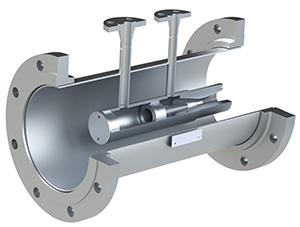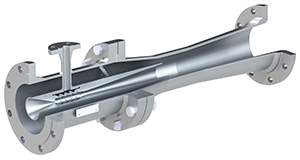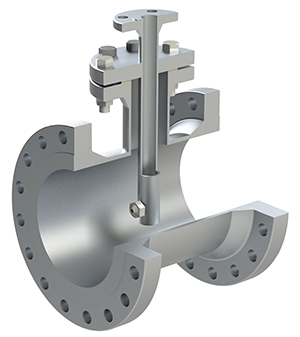Importance of Correct Desuperheater Selection
Not all desuperheaters are made equal. Desuperheaters come in various types and are selected based on application. A desuperheater’s job is quite simple – spray water into the superheated steam supply line to cool it down – this simplicity can relegate its application selection and the wrong type of desuperheater can be applied leading to a big headache once in operation.
Below are criteria to consider when selecting a desuperheater for a given application:
- Sufficient straight-line lengths upstream and downstream, along with desuperheater orientation – horizontal or vertical. Vertical is typically preferred, but not always practical especially if retrofitting into an existing system.
- Turndown requirements, maximum to minimum. These should be realistic, future-proofing a desuperheater system by specifying a maximum duty of say 100 t/h superheated steam flow that will only be reached five years into a plants operation, can be a bad judgment call if it means an initial five years of poor desuperheater performance if the plant is nowhere near that flow duty currently. In such a situation, an alternative solution may be to install a low capacity unit for the first five years with built-in provision to swap out for a different type of unit when the duty increases.
- Steam line sizing – certain types of desuperheaters require that the line sizing be correct for it to perform well. This point in a wider sense is linked to bullet two above – in that if all the line sizing is specified for a maximum future duty, then, by definition, it is oversized for the current duty. An ejector type desuperheater can tolerate a line that’s not correctly sized, other types cannot.
- Additional criteria to consider but not limited to include available quantity and pressure of cooling water, any high-pressure steam supplies nearby (for ejector desuperheater types), distance to temperature transmitter, control philosophy, and line layout.
Now with that primer, we can move onto the various common types of desuperheaters available and the advantages and disadvantages each type that must be weighed when making a type selection.
Ejector type
This design uses a small amount of high-pressure steam to atomize the cooling water in the mixing chamber.
 Advantages:
Advantages:
- Wide flow range of operation with a 50:1 turndown capacity
- Correct line sizing not critical for good operation
- Performs just as well horizontally as it does vertically
- Low cooling water pressure requirement, typically at a pressure just above or at steam line pressure is enough
- A simpler overall system, resulting in a reduced maintenance requirement.
Disadvantages:
- Requires a medium to high-pressure auxiliary (atomizing) steam supply
- Requires an additional control valve for the auxiliary (atomizing) steam supply
Venturi type
The venturi design uses the velocity of the steam to atomize the cooling water.
 Advantages:
Advantages:
- Good operational turndown range of 10:1, a vertical install (preferred) may offer a further increase on this turndown.
- Cooling water enters an internal circulatory chamber prior to being introduced to the steam, this has the benefit of pre-heating the cooling water to some degree.
- A simpler overall system, resulting in a reduced maintenance requirement.
Disadvantages:
- Requires more space vs other types of units
- Pipeline sizing must be accurate for good operation
Spray type
In this simple design, cooling water is injected into the superheated steam through a nozzle.
 Advantages:
Advantages:
- Simple construction so can be a cost-effective option if suitable for the application. Many vendors offer this type as sizing is straightforward.
- Ideally for applications where the steam load remains relatively constant.
Disadvantages:
- Limited turndown of 2:1, a vertical install (preferred) may offer a further increase on this turndown.
- Pipeline sizing must be accurate for good operation.
- Water pressure requirements are usually very high. In some instances dedicated high-pressure pumps must be installed, negating any initial cost saving with this type.
- Nozzles are machined with fine ports that can clog so this type requires routine inspection and nozzle cleaning/replacement. It is good practice to have a few spare nozzles in stock.